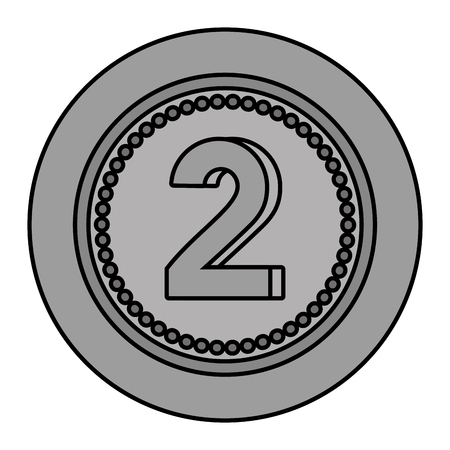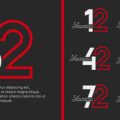Origins of the Evil Eye in British Folklore
The notion of the evil eye may seem like a Mediterranean or Middle Eastern concept, but its roots run deep within the British Isles, weaving through the mists of pre-Christian Britain and evolving alongside Celtic traditions. The idea that an envious or malevolent glance could bring misfortune was not foreign to ancient Britons. In fact, archaeological evidence and early texts suggest a tapestry of beliefs surrounding supernatural influences, where the eyes held significant power. Among the Celts, for instance, druids were believed to wield both protective and destructive spiritual forces, and stories abounded of individuals whose gaze could blight crops or sicken livestock—a clear parallel to later evil eye superstitions.
Over centuries, these indigenous beliefs absorbed new influences as waves of cultural exchange swept across the islands. Roman occupation introduced classical understandings of envy and malocchio, while Norse invaders brought their own sagas of harmful glances. By the medieval period, the concept had become firmly entrenched within local lore, often blending with Christian notions of sin and temptation. The evil eye thus emerged as a cross-cultural phenomenon in British folklore: part home-grown tradition, part imported superstition, and always reflective of deeper anxieties about fortune, envy, and unseen powers lurking just beyond everyday experience.
2. Traditional Beliefs and Regional Variations
The evil eye, while often associated with Mediterranean or Middle Eastern cultures, has woven itself into the fabric of British folklore in remarkably distinct ways. Its presence is evident across England, Scotland, Wales, and Northern Ireland—each region infusing its own local colour and interpretation. Let’s explore how these variations have shaped perceptions and responses to the evil eye throughout the British Isles.
England: Subtle Suspicions and Protective Rituals
In English folk tradition, the evil eye was frequently believed to be cast—intentionally or not—by those harbouring envy or ill will. The phrase “overlooked” was commonly used to describe someone struck by misfortune after a malevolent glance. Cures ranged from burning salt and bread to carrying protective charms such as hag stones (naturally holed pebbles). Interestingly, rural communities sometimes accused certain individuals, especially elderly women, of possessing the power to curse livestock or crops with a mere look.
Scotland: The Power of the ‘Evil Eye’ and Counter-Magic
Scottish folklore features more explicit references to the “evil eye,” or “droch shùil” in Gaelic. Here, the threat extended beyond people to animals—especially prized cattle and sheep. To ward off harm, Highlanders relied on rituals like “saining” (blessing with water or smoke) and the use of rowan branches above doorways. In some areas, blue glass beads were sewn into children’s clothing as amulets against malign influences.
Wales: Omens and Community Safeguards
Welsh superstitions surrounding the evil eye often focused on omens rather than direct curses. A sudden illness or unexplained bad luck might be attributed to an “llygad drwg” (evil eye). Protection involved reciting specific prayers or carrying sacred objects such as fragments of scripture. Collective rituals—like walking sunwise around a home—were believed to counteract negative energies brought by envious gazes.
Northern Ireland: Folk Remedies and Shared Fears
Northern Irish traditions blend Celtic myth with local Catholic practices. The “bad eye” could be warded off by sprinkling holy water or marking thresholds with blessed chalk at Epiphany. Interestingly, some customs blurred the line between suspicion and community care: if a neighbour complimented your child or animals too effusively, it was customary to touch wood or mutter a blessing just in case their praise inadvertently cast the evil eye.
Regional Expressions of the Evil Eye in Britain
| Region | Local Term | Main Belief/Manifestation | Common Protection |
|---|---|---|---|
| England | Overlooking/Evil Eye | Mischief from envious glances; impact on people & livestock | Hag stones, burning salt & bread |
| Scotland | Droch shùil (Gaelic) | Curses affecting health & animals; fear of witches | Saining rituals, rowan branches, blue beads |
| Wales | Llygad drwg | Omens of bad luck/illness; less direct accusation | Prayers, scripture fragments, sunwise rituals |
| Northern Ireland | The Bad Eye/Evil Eye | Praise believed to bring misfortune; mix of superstition & faith | Holy water, blessed chalk, spoken blessings/touch wood |
This cross-cultural patchwork highlights how the evil eye motif adapted within British contexts—absorbing regional beliefs while maintaining a common thread of vigilance against unseen harms. As we move forward through history, these traditions would both endure and evolve under new influences.

3. Protective Measures and Folk Remedies
Throughout British history, the threat of the evil eye spurred communities to develop a diverse toolkit of protective measures, each with its own cultural resonance. At the heart of these defences were physical charms and talismans, which ranged from the common to the curious. Among the most iconic is the hag stone—a naturally holed pebble found along Britain’s coasts and riverbanks. Folklore held that peering through a hag stone could reveal hidden witches or dispel malevolent glances, making it a staple in many households, especially in rural regions.
Blue beads, often associated with Mediterranean cultures, also found their way into British folk practice, particularly in port towns influenced by maritime trade. These beads were believed to absorb or deflect ill intent, and you’d find them hung in windows or worn as jewellery by those who felt vulnerable to envy.
Beyond objects, ritual actions played a vital role. Spitting—discreetly done over one’s left shoulder—or uttering phrases such as “touch wood” became everyday ways to ward off misfortune. Salt was another household essential; a pinch thrown over the shoulder or scattered at thresholds served as a barrier against unseen harm.
Herbs and plants featured prominently too. Rowan trees, with their bright red berries, were planted near homes or used to craft small crosses, harnessing their reputed protective powers. Horseshoes nailed above doors—always facing upwards to ‘catch’ luck—became both a practical and symbolic defence against curses.
These practices weren’t just superstitions—they reflected a communal understanding that protection from envy and ill will required vigilance woven into daily life. Whether through stones, charms, or simple spoken rituals, British folklore offered myriad ways for ordinary people to reclaim agency in the face of the unknown.
4. The Evil Eye in British Literature and Art
The legacy of the evil eye extends far beyond oral tradition, permeating the very fabric of British literature, visual arts, and popular culture. While often considered an exotic or foreign superstition, British writers and artists have long drawn upon the symbolism and anxieties surrounding the evil eye, reinterpreting its meaning for new audiences and contexts.
The Evil Eye in Classic and Modern Literature
From Shakespeare’s references to “envious eyes” to Victorian ghost stories warning of sinister glances, the motif has been woven into numerous works. Authors like Thomas Hardy and D.H. Lawrence used the evil eye as a metaphor for social jealousy or the destructive power of gossip within close-knit communities. In contemporary fiction, writers explore the psychological dimensions—paranoia, envy, and alienation—often linking them back to historic beliefs about ill will transmitted through sight.
Visual Arts: From Portraiture to Pop Culture
British visual artists, too, have played with the concept of the evil eye. In 18th-century portraiture, protective motifs such as miniature “eye” lockets subtly referenced both affection and the need for spiritual safeguarding. The Pre-Raphaelites depicted mythic figures whose gazes hinted at danger or otherworldly influence. Today, designers incorporate eye motifs into jewellery and fashion collections—a nod to ancient protection symbols reimagined for modern Britain.
Influence Across Media: A Comparative Overview
| Medium | Classic Example | Modern Interpretation |
|---|---|---|
| Literature | Shakespeare’s “A Midsummer Night’s Dream” (references to bewitching eyes) | Sally Green’s “Half Bad” trilogy (envy and magical curses) |
| Visual Arts | 18th-century eye lockets & miniatures | Pandora’s “evil eye” jewellery collection |
| Popular Culture | Pantomimes with villainous stares | TV shows like “Doctor Who” referencing cursed glances |
A Living Motif in Contemporary Culture
The evil eye continues to resonate in British popular culture—not only in gothic novels or period dramas but also in everyday language (“giving someone the evil eye”). Its persistence reflects an enduring fascination with envy, protection, and the power of unseen forces—a cultural thread woven through Britain’s creative tapestry from past to present.
5. Contemporary Perspectives and Interpretations
In modern Britain, the evil eye has undergone a fascinating transformation from a rural superstition to a multifaceted cultural phenomenon. The contemporary British view is shaped by the nation’s rich history of folklore, yet it is also increasingly influenced by global perspectives, particularly in multicultural urban settings such as London, Manchester, and Birmingham.
The Evil Eye in Multicultural Britain
Today, the evil eye is not solely rooted in old English beliefs; rather, it finds fresh significance within Britain’s diverse communities. Many families of Mediterranean, Middle Eastern, and South Asian descent bring their own interpretations and protective rituals into the cultural mosaic of British life. Blue glass charms and amulets—once seen primarily as exotic imports—are now found hanging in homes, shops, and even cars across the UK. In these urban environments, sharing stories of the evil eye often acts as a bridge between generations and backgrounds, creating new narratives that blend heritage with present-day experiences.
Modern Spirituality and Wellness Trends
Beyond tradition, the evil eye has been embraced by those seeking spiritual protection in an era marked by uncertainty and digital exposure. From mindfulness practitioners to followers of new age spirituality, the symbol is now part of a broader toolkit for warding off negativity—whether that means bad vibes at work or social media envy. Workshops on energy cleansing or “protection rituals” may include references to the evil eye alongside crystals and sage. This reflects a growing appetite among Britons for personalised spirituality that borrows freely from various global traditions.
The Evil Eye as Fashion Statement
Perhaps most notably, the evil eye has emerged as a stylish motif in British fashion and wellness culture. High street brands and independent jewellers alike offer bracelets, necklaces, and even clothing emblazoned with the iconic blue eye. Celebrities sporting these designs have propelled the symbol into mainstream visibility; what was once a mark of superstition is now marketed as a chic talisman against misfortune or simply as a bold aesthetic choice. This commodification does not necessarily strip away its meaning—instead, it provides an accessible entry point for younger generations to explore both personal identity and shared heritage.
A Living Symbol in Contemporary Society
The evil eye’s journey through British folklore to its current position at the intersection of multiculturalism, spirituality, and style highlights its enduring power as a symbol of protection and adaptability. Whether evoked in family stories passed down over tea or worn proudly on city streets, it remains both a link to ancestral fears and a statement of modern resilience—a testament to Britain’s ever-evolving cultural landscape.


